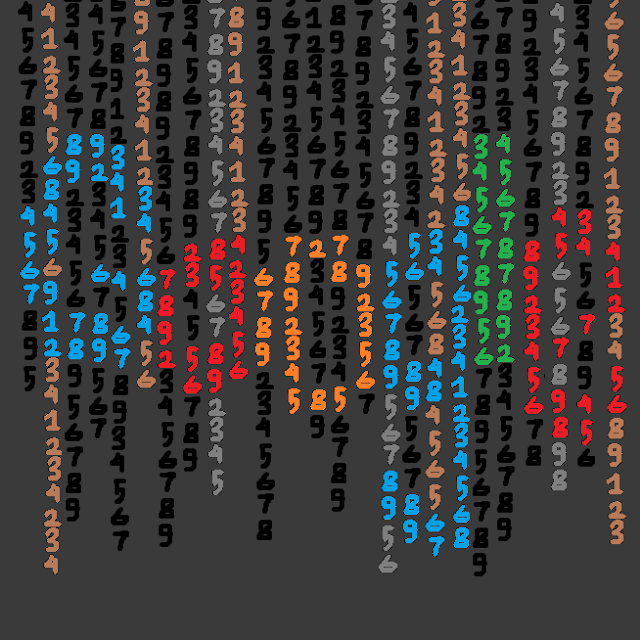Dorico Notation Software - The Future of Music Composition - Blog No. 41
Introduction
In the ever-evolving world of music composition, having the right tools at your disposal can make all the difference. Whether you're a seasoned composer, an educator, or an aspiring musician, notation software plays a crucial role in bringing your musical ideas to life.
Among the many options available, Dorico stands out as one of the most powerful and innovative notation programs on the market. Developed by Steinberg, the creators of Cubase, Dorico has revolutionized the way musicians approach digital scoring.
In this deep dive, we’ll explore what makes Dorico unique, how it compares to competitors like Finale and Sibelius, and why it might just be the perfect tool for your next composition. So, grab your baton (or MIDI keyboard), and let’s embark on this musical journey!
The Story Behind Dorico
Dorico’s origins are a story of innovation and resilience. In 2012, Avid, the parent company of Sibelius, laid off the core development team responsible for maintaining and improving the software.
Rather than letting their talents go to waste, Steinberg quickly assembled these industry veterans and tasked them with creating a new notation program from the ground up. After years of meticulous development, Dorico was officially launched in 2016, setting new standards in music notation.
The result? A software that is not just another music notation tool but an entirely reimagined approach to digital scoring—one that prioritizes musical intelligence, flexibility, and a streamlined workflow.
Why Choose Dorico Over Other Notation Software?
When it comes to music notation software, three major players dominate the landscape: Finale, Sibelius, and Dorico. While each has its strengths, Dorico offers a fresh perspective and several key advantages:
1. Advanced Engraving and Notation
One of Dorico’s standout features is its automatic engraving engine, which ensures that every score looks professional right out of the box. Unlike other software that requires manual adjustments to align notes, rests, and dynamics, Dorico intelligently spaces elements according to traditional engraving rules, saving hours of editing time.
2. Effortless Workflow
Dorico is designed with composers in mind, featuring an intuitive five-mode interface:
Setup Mode – Define instruments and players.
Write Mode – Compose and input notes.
Engrave Mode – Perfect your score’s layout.
Play Mode – Control playback and MIDI performance.
Print Mode – Export and share your work seamlessly.
This modular approach helps users focus on one task at a time, reducing clutter and improving efficiency.
3. Superb MIDI and Playback Integration
Dorico’s playback engine is powered by Steinberg’s renowned HALion sound library, providing high-quality instrument samples. It also offers deep integration with VST instruments and effects, allowing composers to create lifelike renditions of their work without leaving the software.
4. Revolutionary Note Input System
Unlike traditional notation programs that rely on a fixed rhythmic grid, Dorico allows for fluid and flexible input. This means you can compose freely without worrying about shifting notes to accommodate changes—a game-changer for composers who prefer an organic workflow.
5. Perfect for Large-Scale Compositions
For those working on film scores, orchestral arrangements, or complex contemporary music, Dorico excels in handling large projects efficiently. Its advanced layout features ensure that even the most intricate compositions remain clear and readable.
6. Regular Updates and an Active Community
Steinberg continuously improves Dorico with regular updates and feature enhancements. The Dorico user community is also thriving, offering tutorials, discussions, and expert advice to help users get the most out of the software.
Dorico for Different Users
Dorico isn’t just for professional composers. It caters to a wide range of musicians and educators:
For Film & Game Composers
With its seamless DAW integration, Dorico is a powerful ally for film and game composers. It allows for real-time playback, making it easy to sync compositions with visuals.
For Educators & Students
Dorico SE (a free version) and Dorico Elements (a more affordable edition) provide excellent tools for teaching notation and music theory in classrooms.
For Classical and Jazz Composers
Dorico’s advanced articulation handling and chord symbol features make it ideal for jazz composers, while its precise engraving capabilities ensure that classical scores look polished and professional.
SEO Benefits: Why Dorico is the Ultimate Notation Software
If you’re searching for the best music notation software, you’ll want something that combines power with ease of use. Dorico ranks highly because:
It’s optimized for modern workflows – Unlike older programs, it leverages modern UI/UX principles for an intuitive experience.
It supports diverse musical styles – From film scoring to jazz and orchestral works, Dorico adapts to different musical needs.
It’s constantly evolving – With frequent updates, it stays ahead of competitors in features and performance.
It’s highly searchable – With terms like Dorico vs. Sibelius, best notation software 2025, and Dorico for film composers, it ranks well in search engine results.
How to Get Started with Dorico
1. Try the Free Version
If you’re hesitant to invest in a new notation software, Dorico SE (free) is a great way to get a feel for the program before upgrading to Elements or Pro.
2. Explore Tutorials and Online Resources
Steinberg offers a wealth of video tutorials, manuals, and forums where users can learn at their own pace.
3. Integrate Dorico into Your Workflow
Whether you’re a traditional composer or work primarily in DAWs, Dorico’s flexible import/export options (MIDI, XML, PDF) make it easy to incorporate into existing workflows.
4. Join the Dorico Community
Engage with other users, ask questions, and stay updated on the latest features through Steinberg’s forums and social media groups.
Conclusion: Is Dorico the Right Choice for You?
Dorico is more than just another notation software—it’s a game-changer for composers who demand precision, efficiency, and professional results. Whether you’re arranging symphonies, composing for films, or teaching music theory, Dorico provides the tools you need to create high-quality scores effortlessly.
So, if you’re looking to elevate your composition workflow, Dorico might just be the best investment you make in your musical journey. Try it today and experience the future of notation!
Related
Final Thought
What do you think about Dorico? Have you tried it yet, or are you considering making the switch? Let us know in the comments below!



Comments
Post a Comment